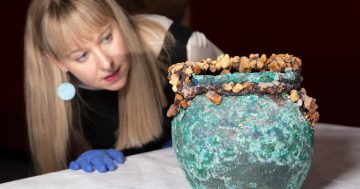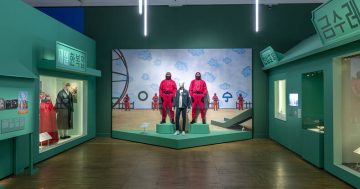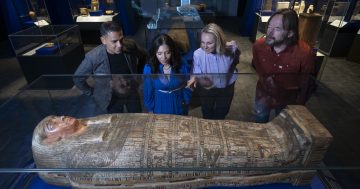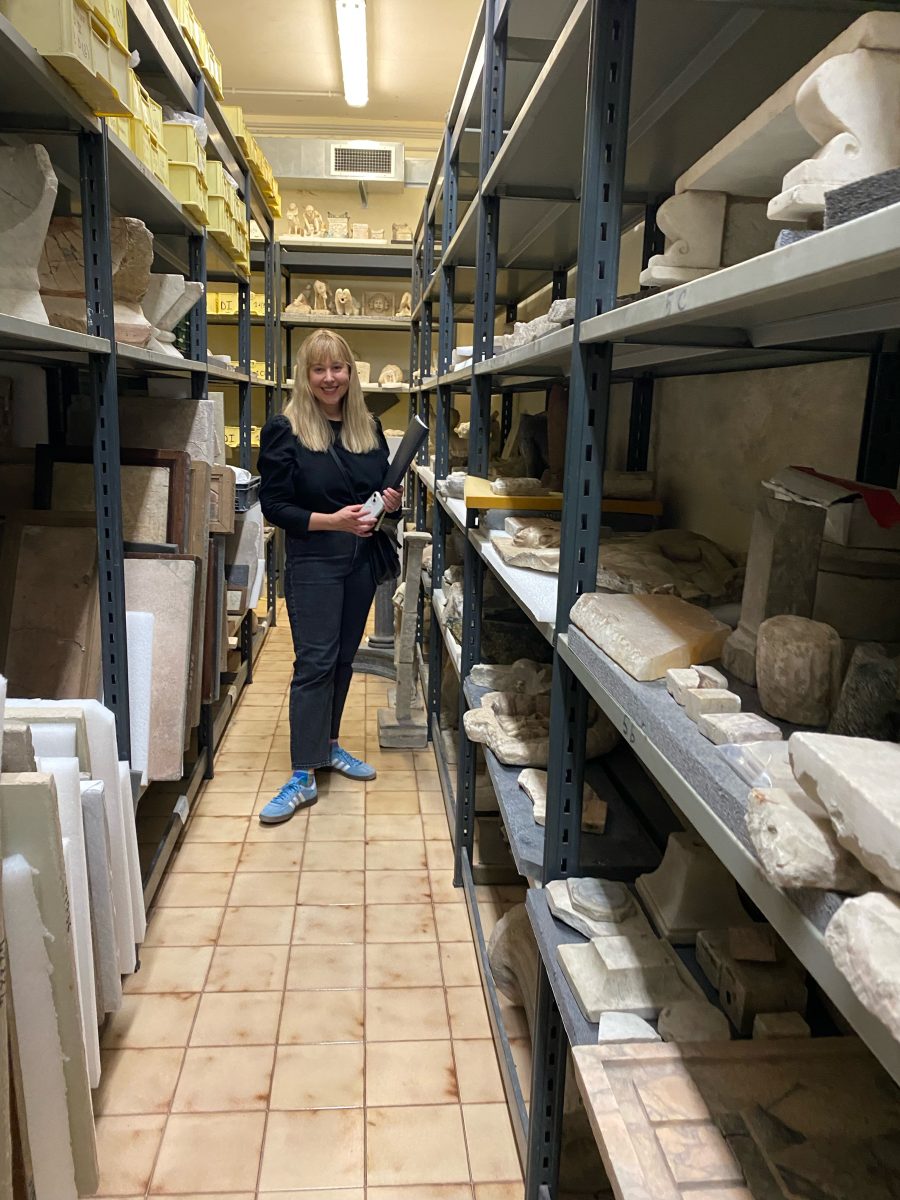
National Museum curator Lily Withycombe was granted the rare privilege of exploring the Archaeological Park of Pompeii vaults in Italy to curate the summer blockbuster in Canberra. Photo: National Museum of Australia.
Lily Withycombe well remembers holding her mother’s hand in 1995 when, as a youngster, she was taken to see an exhibition about ancient Pompeii at a Sydney museum.
“I was so excited,” she said. “It just blew me away.”
Today, almost 30 years on, and now a curator with the National Museum of Australia (NMA), Canberra, Dr Withycombe has just returned from a trip to the Archaeological Park of Pompeii, to select pieces for the Pompeii exhibition in Australia in December as the 2024 summer blockbuster.
With fellow curator Dr Sophie Jensen, they selected 90 “extraordinary objects” from some of the most significant archaeological digs over the past century for the Canberra exhibition.
But to tell the remarkable story, of the catastrophic volcanic eruption of Mount Vesuvius almost 2000 years ago, was always going to take more than just items in display cases.
Rare artefacts, including a single piece of bread from the time, a set of dice made from bone, a signet ring … were crucial to the story, but they were only part of it – she wanted to tell the whole story – about the people who lived there, the catastrophe and the aftermath.
In this exclusive collaboration with the Archaeological Park of Pompeii in Italy, the Grand Palais in France and the NMA, the ancient city will be brought back to life – not just with the priceless artefacts on loan, but with an immersive experience where the audience can’t but help feel part of the story.
The volcanic eruption itself is set against a backdrop of the artefacts, some of which were excavated in only the past six years, selected by the NMA’s Dr Withycombe, herself an archaeologist who worked in Pompeii.
Director of the NMA, Katherine McMahon, said Pompeii combined moving soundscapes and large-scale digital projections with the artefacts, recreating life in the ancient city and presenting the people of Pompeii as they were before the eruption of Mount Vesuvius in 79 CE.
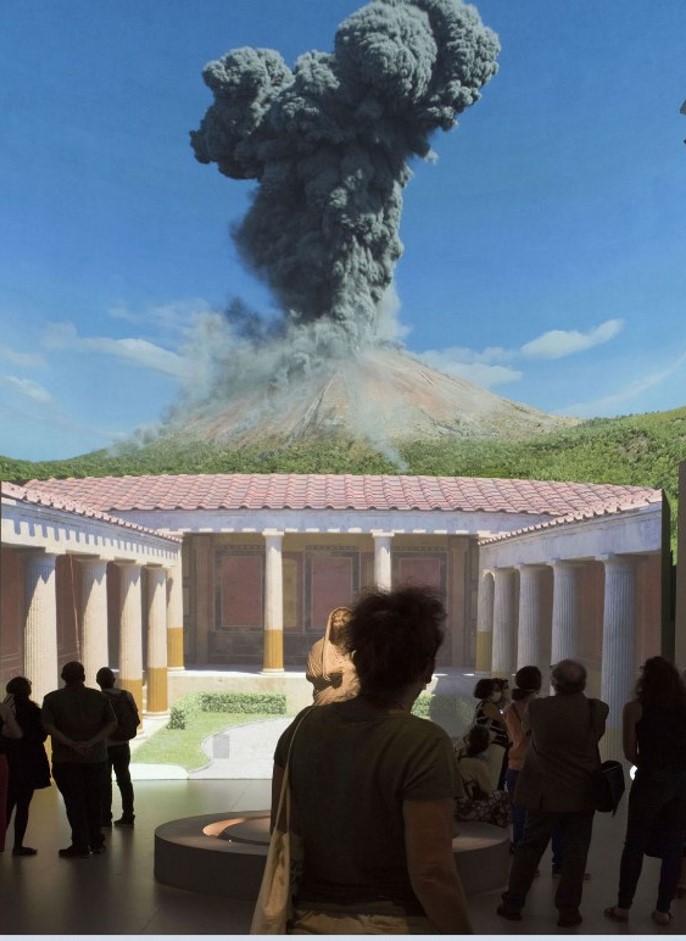
Visitors to the Grand Palais Pompeii exhibition in France watch the large-scale digital projections, including the eruption in the background. The exhibition will only be seen in Australia at the NMA. Photo: Grand Palais, France.
“Visitors will be able to experience it like never before,” she said.
“Key objects on display will include stunning frescoes spanning more than three metres, magnificent mosaics, jewellery, sculptures and moving replicas of casts of people who died in the disaster.
“This exhibition is the first of its kind in Australia,” she said. “Ancient Pompeii still captures the imagination almost 2000 years after its destruction. It is a story that has been passed down through the ages and one that keeps evolving with each new archaeological discovery.
“Now Australians and international visitors to our capital city will experience the majesty, wonder and tragedy of Pompeii in an entirely new way – as both a living, breathing ancient city and as an archaeological site.
“This fully immersive exhibition, in combination with striking artefacts which have never previously been seen in Australia, invites people to explore everyday life in the city, and its post-eruption rediscovery, especially in the past decade of major new excavations.
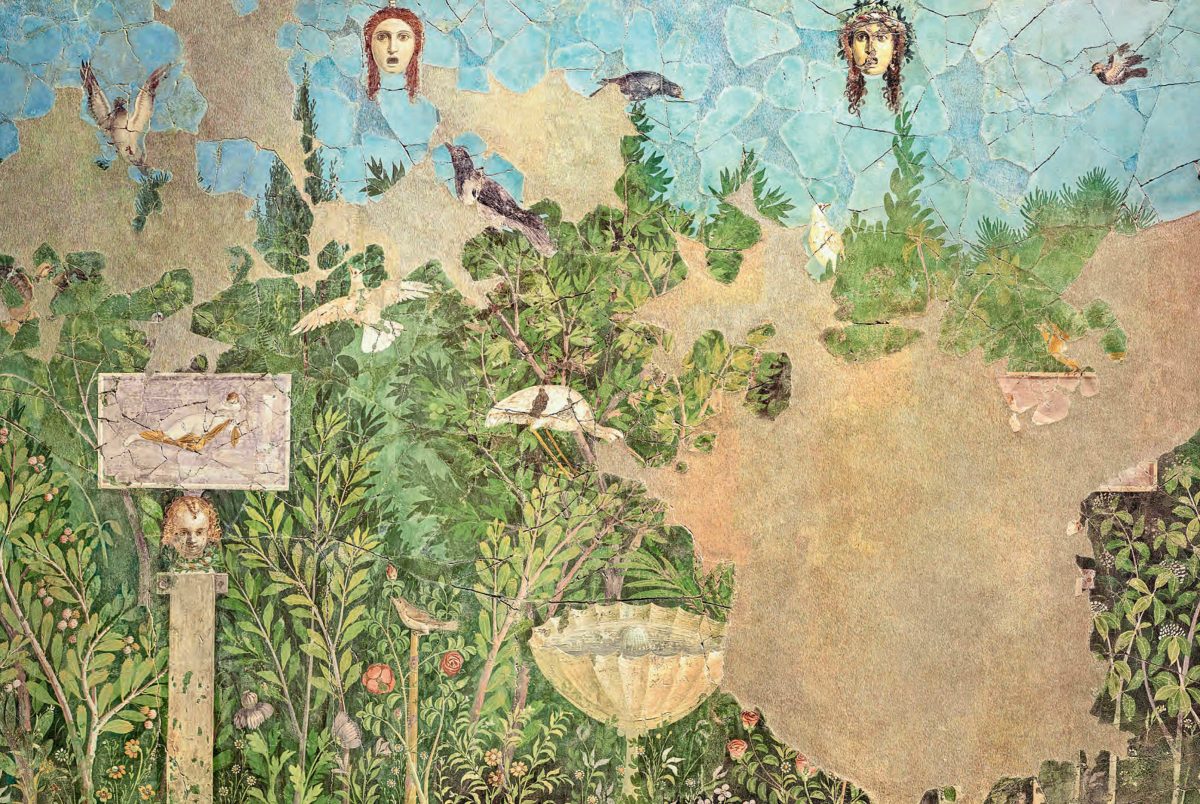
A section of ancient Pompeii fresco which will be featured in the summer blockbuster at the NMA. Photo: NMA.
Dr Withycombe said a highlight of Pompeii’s large-scale audiovisual experience was a spectacular 360-degree recreation of Mount Vesuvius’ eruption.
“For three centuries, excavations on the Pompeii archaeological site have uncovered extraordinary traces of everyday life, such as jewellery, sculptures and pottery, which serve as poignant reflections of the lives shattered on the day Mount Vesuvius erupted,” Dr Withycombe said.
“More recently, excavations have unearthed large, elegant homes, such as the House with the Garden with its amazing frescoes and graffiti, the House of Leda and the Swan and the House of Orion. All these new sites are represented in the exhibition.
“The 90 extraordinary objects selected for display come from some of the most significant archaeological digs over the past century.
“They include sculptures, pieces of architecture and a treasure trove of amulets and objects from everyday lived experiences made from earthenware, glass paste, ivory, bone, amber and bronze.
“These objects focus on the very real human experience inside the exhibition. Visitors will see themselves reflected in ancient Pompeii through relatable objects, such as cookware and tweezers. And they will feel compassion by connecting with this incredible material culture that spans the full experience in Ancient Rome and the rich, complex full lives people lived.”
Tickets for Pompeii go on sale in late October on the NMA website.
Original Article published by Sally Hopman on Riotact.


